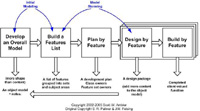Introduction
During the last two years, there has been a reduction in IT budget due to the state of the economy. Many decision makers in small and large organizations are concerned about the high cost and protracted development cycles of implementing business process management (BPM) solutions. In an attempt to adopt the latest cutting edge technology, BPM big-ticket capital expenditures usually results in delayed return on investment. This article seeks to address these major concerns and offer three critical solutions that can help organizations drastically reduce BPM implementation cost.
Challenges
The major fear that IT executives have with regards to BPM is tied to the high cost of implementation. Most BPM solution suite providers charge an exorbitant amount of money for licensing fees and installation. Combined with the high licensing cost is the high implementation cost of designing and deploying a BPM solution. For example, according to indeed.com, the average BPM consultant rate could go for as high as $150 per hour.
In addition to the high licensing and resource cost, an enterprise wide, service oriented BPM solution could take as long as 3-6 months to design and another 6 months to complete an initial phase of deployment. Factors like this make BPM implementation an expensive solution only available to the high and mighty. But with the current state of the American economy, even the high and mighty can no longer afford to spend large amounts of money these days.
The question asked is what options are available to those organizations that are seeking to adopt the latest technology, reduce project risk by minimizing upfront capital investment and at the same time achieve Rapid ROIs. We discuss three critical strategies that can be employed to keep cost “within the fringes”.
Strategies
- Choosing the right BPM tool
Appian, Bizflow, Lombardi, Metastorm, Oracle BPM, Savvion, … and the list grows. Today there are more than a handful of BPM tools available in the market. While they all may look and sound to provide the same functionality, especially when you hear the persuasive sales reps, all BPM tools do not do the same thing to the same degree. Each tool is optimized for a specific set of processes, integration requirements, human interface and exception-handling requirements, simulation requirements and performance management requirements. Finding the BPM tool that offers most of the features required to meet the business requirement is not an easy task. A lot of homework needs to be done and a lot experience needs to be used to select the right product.
The process of identifying the right BPM tool involves understanding in detail the processes an organization wants to implement, mapping out what existing application and software the BPM tool will be interfacing with and also having a clear understanding of the overall business strategies of the organization.
The missing caveat to the above steps that most people miss out is identifying what standard out-of-the box functionalities get shipped with the BPM tool. As today’s BPM tools are following the BPM idea of “process without programming”, out of the box functionalities and adaptors/transformers are the best criteria for selection of a tool. Some products offer many transformers while others offer only a few.
Every organization today will have numerous existing software applications which are used for day to day transactions. Some of these applications might be an integral part of the organizations core business processes. When selecting a BPM tool one should consider what out-of-the-box adapters are offered with the BPM tool that could be used to integrate with their existing software applications. The adapters can be reused for different solutions thereby reducing development time.
In today’s global enterprise, numerous business processes occur each day and most of them have an associated form to fill out such as filling out a purchase request form, an application form for review and approval, or forms for sharing knowledge, etc. These forms can be designed using different formats such as HTML, PDF or InfoPath. By using a BPM software that utilizes WYSIWYG (what you see is what you get) designer form tool to create and integrate with widely used form formats, organizations can save a lot on development cost.
In summary, choose the BPM tool which meets or exceeds the business requirements. Also, plan to always use out-of-the-box functionalities provided by the tool. In addition try to avoid customization of the tool. Customization always comes with a cost which grows beyond expectation with time. In addition to increased development cost, customization could lead to increased maintenance and upgrade cost. Customization reduces the perks that come with using COTS products.
- Running BPM as a cloud Service
With the growing reliability of the internet, many organizations can take advantage of the resources the internet has to offer. A great synergy can occur by combining BPM and SaaS (Software as a service). What SaaS offers is the ability to reduce deployment times and decrease project risk. Organization that choose to go with BPM cloud solutions instead of hosting the BPM engines do not have to worry about purchasing and maintaining expensive servers. This in turn translates into reduced capital cost and lower implementation cost.Additionally, depending on the BPM service provider, organizations can adopt alternate pricing models such as on-demand pricing where service is charged on a per user bases rather than the traditional upfront licensing fee. Utilizing on-demand user-based licensing rather that CPU- based licensing can help to drastically reduce cost.
Other benefits that come with running BPM on the cloud include easier collaboration between developers since the software exists on the internet and can be accessed from anywhere.
Of course running BPM on the cloud does not come without its drawbacks the biggest on which is data vulnerability. Since data gets stored on 3rd party servers, there is a risk of data “vulnerability” especially with highly sensitive data. Having discussed this drawback it must be noted that internet security protocols such as SSL and other encryption technologies can be employed to secure data and limit the risk of data vulnerability.
Examples of leading BPM suite SaaS solution providers include Appian through Appian Anywhere and Lombardi through Lombardi Blueprint.
- Adopting a suitable development methodology
Another way to reduce BPM implementation cost is to utilize more pragmatic software development processes. Being pragmatic means making use of a development lifecycle that is tailored to fit your organizations business needs. Many existing traditional lifecycles are not geared towards organizations looking to reduce cost and at the same time implement successful solutions. Adopting agile development life cycles such as Feature –Driven development (FDD) can prove useful in reducing cost. FDD is a customer centric and architecture centric approach that aims to develop client-valued functions called features. After the overall model of the system is defined, a list of features of the system is created and development is driven based on these features. Multiple iterations of the system are built by adding new features to the overall model.
The diagram below shows how the FDD life cycle works.Figure 1: FDD Lifecycle
Following such development methodologies ensures that the system built does what the customer wants. Also a system can be built that factors in the budget available and ensures that only vital features are added. Other features can be added as more financial and human resource is made available.
Summary
To conclude, in order to stay within the fringes and reduce cost in these tough economic times, organizations must adopt new innovative strategies that will help them meet their business needs. Using BPM as an architecture to support these business needs, decision makers must make a choice to balance the high cost of implementation with the reduced IT budgets available at their disposal. By choosing the right BPM tool, running BPM on the cloud and adopting a suitable development methodology, organizations can drastically reduce their BPM implementation cost and at the same time produce successfully BPM solutions that meet their core needs.


















